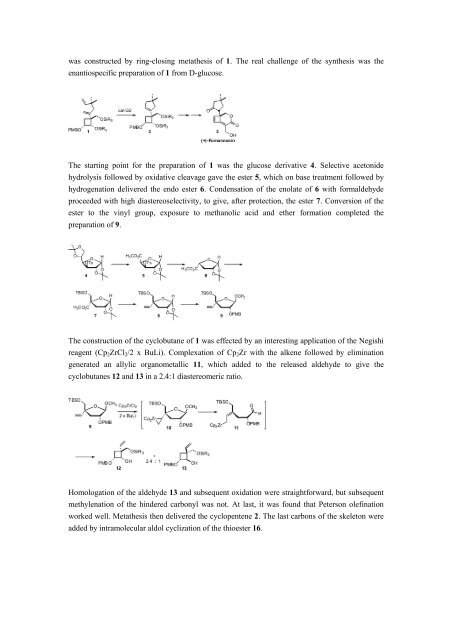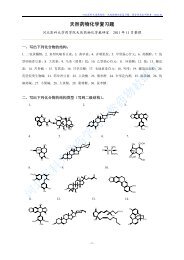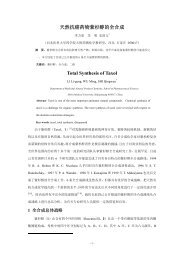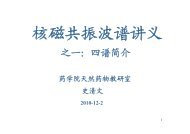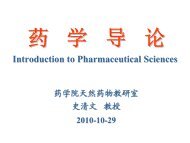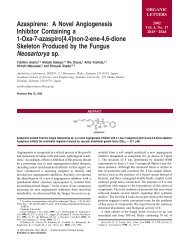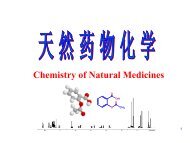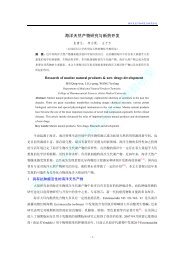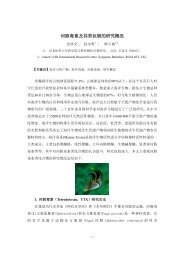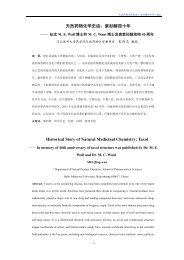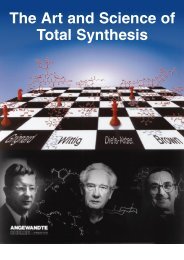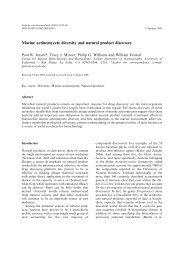Total Synthesis Highlights
Total Synthesis Highlights
Total Synthesis Highlights
You also want an ePaper? Increase the reach of your titles
YUMPU automatically turns print PDFs into web optimized ePapers that Google loves.
was constructed by ring-closing metathesis of 1. The real challenge of the synthesis was the<br />
enantiospecific preparation of 1 from D-glucose.<br />
The starting point for the preparation of 1 was the glucose derivative 4. Selective acetonide<br />
hydrolysis followed by oxidative cleavage gave the ester 5, which on base treatment followed by<br />
hydrogenation delivered the endo ester 6. Condensation of the enolate of 6 with formaldehyde<br />
proceeded with high diastereoselectivity, to give, after protection, the ester 7. Conversion of the<br />
ester to the vinyl group, exposure to methanolic acid and ether formation completed the<br />
preparation of 9.<br />
The construction of the cyclobutane of 1 was effected by an interesting application of the Negishi<br />
reagent (Cp 2 ZrCl 2 /2 x BuLi). Complexation of Cp 2 Zr with the alkene followed by elimination<br />
generated an allylic organometallic 11, which added to the released aldehyde to give the<br />
cyclobutanes 12 and 13 in a 2.4:1 diastereomeric ratio.<br />
Homologation of the aldehyde 13 and subsequent oxidation were straightforward, but subsequent<br />
methylenation of the hindered carbonyl was not. At last, it was found that Peterson olefination<br />
worked well. Metathesis then delivered the cyclopentene 2. The last carbons of the skeleton were<br />
added by intramolecular aldol cyclization of the thioester 16.


